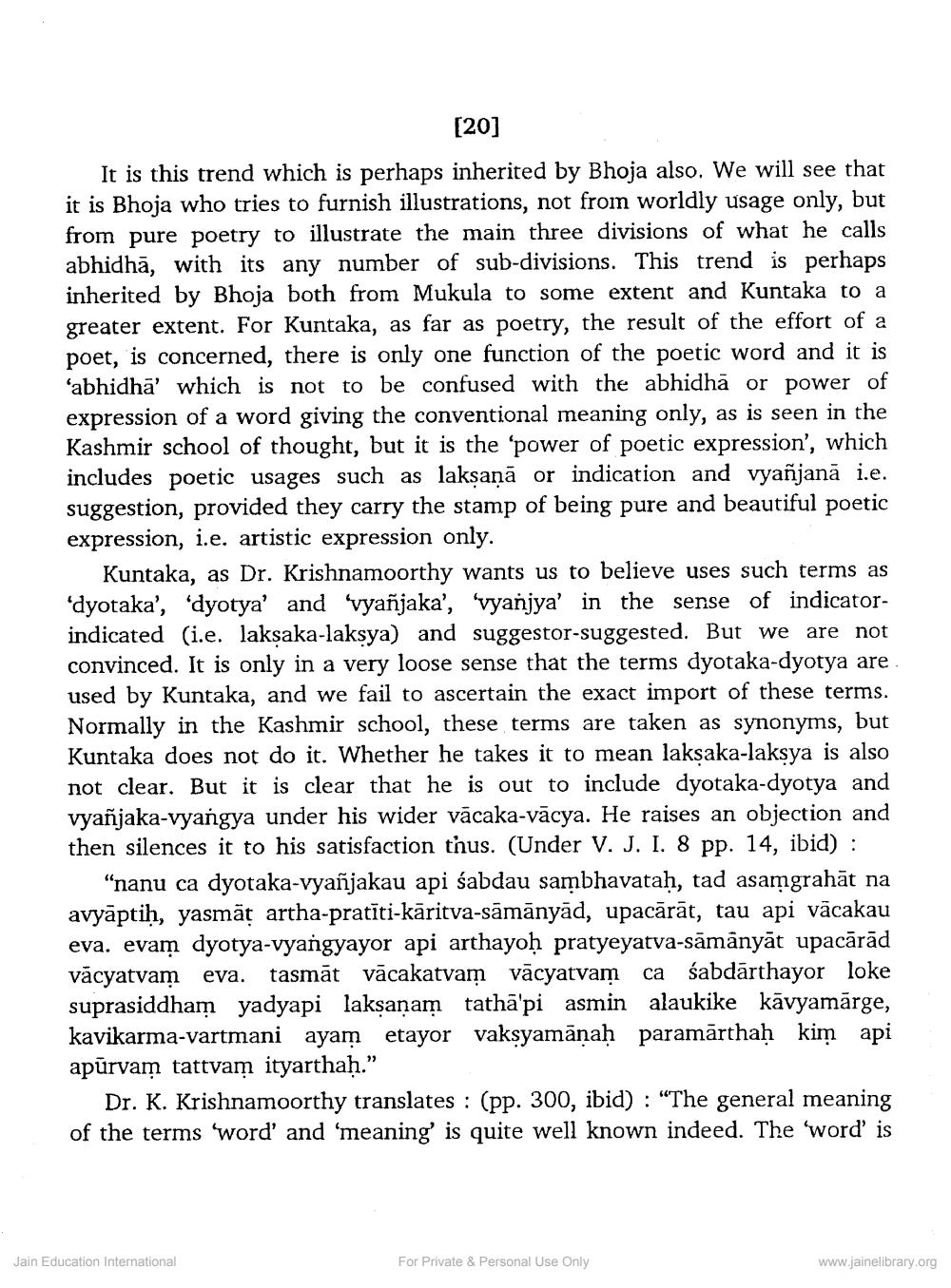________________
[20] It is this trend which is perhaps inherited by Bhoja also. We will see that it is Bhoja who tries to furnish illustrations, not from worldly usage only, but from pure poetry to illustrate the main three divisions of what he calls abhidhā, with its any number of sub-divisions. This trend is perhaps inherited by Bhoja both from Mukula to some extent and Kuntaka to a greater extent. For Kuntaka, as far as poetry, the result of the effort of a poet, is concerned, there is only one function of the poetic word and it is ‘abhidhā' which is not to be confused with the abhidhā or power of expression of a word giving the conventional meaning only, as is seen in the Kashmir school of thought, but it is the power of poetic expression', which includes poetic usages such as laksaņā or indication and vyañjanā i.e. suggestion, provided they carry the stamp of being pure and beautiful poetic expression, i.e. artistic expression only.
Kuntaka, as Dr. Krishnamoorthy wants us to believe uses such terms as dyotaka', 'dyotya' and vyañjaka', 'vyanjya' in the sense of indicatorindicated (i.e. laksaka-laksya) and suggestor-suggested. But we are not convinced. It is only in a very loose sense that the terms dyotaka-dyotya are used by Kuntaka, and we fail to ascertain the exact import of these terms. Normally in the Kashmir school, these terms are taken as synonyms, but Kuntaka does not do it. Whether he takes it to mean laksaka-laksya is also not clear. But it is clear that he is out to include dyotaka-dyotya and vyañjaka-vyangya under his wider vācaka-vācya. He raises an objection and then silences it to his satisfaction thus. (Under V. J. I. 8 pp. 14, ibid) :
"nanu ca dyotaka-vyañjakau api śabdau sambhavataḥ, tad asamgrahāt na avyāptih, yasmāt artha-pratīti-kāritva-sāmānyad, upacārāt, tau api vācakau eva. evam dyotya-vyangyayor api arthayoḥ pratyeyatva-sāmānyāt upacārād vacyatvam eva. tasmāt vācakatvam vācyatvam ca śabdārthayor loke suprasiddham yadyapi laksanam tathā'pi asmin alaukike kāvyamārge, kavikarma-vartmani ayam etayor vaksyamāṇaḥ paramārthaḥ kim api apūrvam tattvam ityarthah.”
Dr. K. Krishnamoorthy translates : (pp. 300, ibid) : “The general meaning of the terms 'word' and 'meaning' is quite well known indeed. The 'word' is
Jain Education International
For Private & Personal Use Only
www.jainelibrary.org




